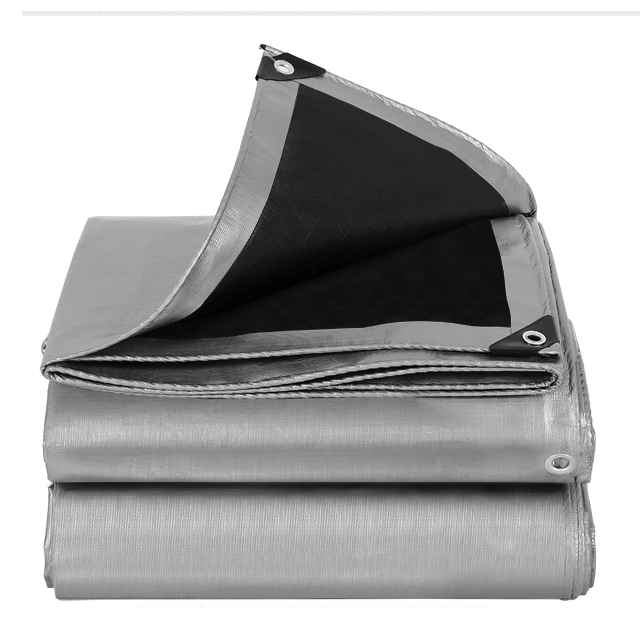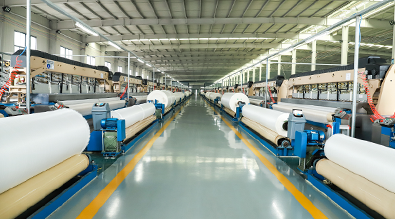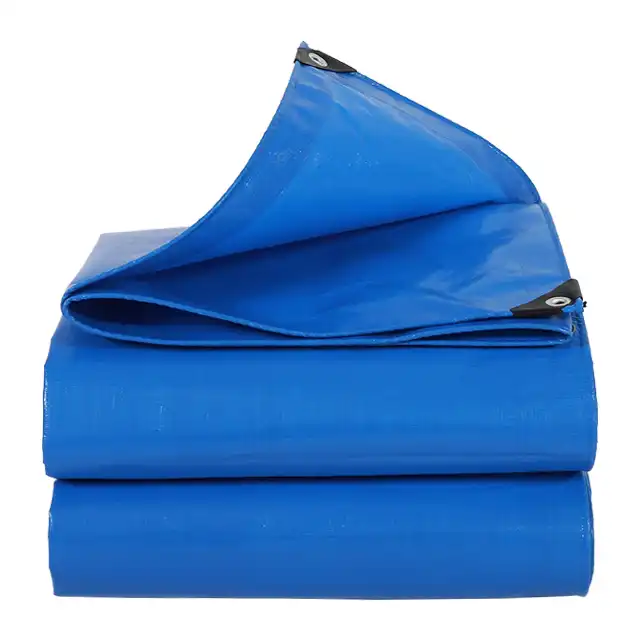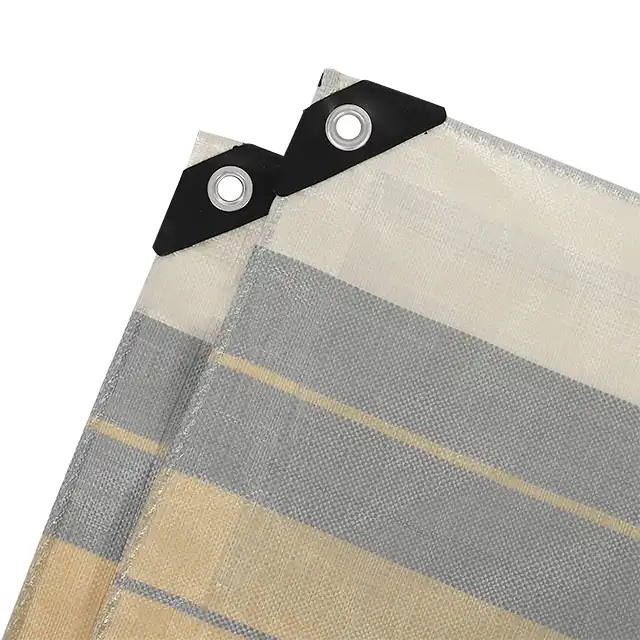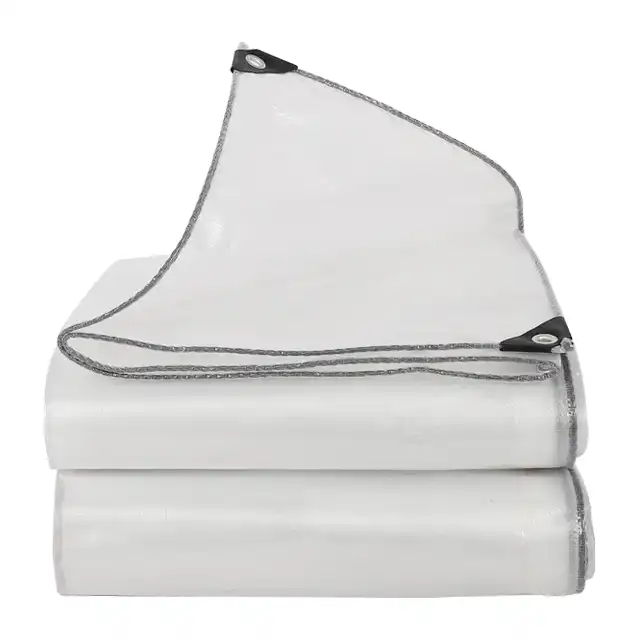Tips for Proper Storage of Tarpaulins to Extend Their Lifespan
Every year, countless businesses and individuals lose thousands of dollars due to tarpaulin failure that could have been prevented. Picture this: your valuable equipment exposed to harsh weather because your tarpaulin developed holes, tears, or became brittle after improper storage. The harsh reality is that most tarpaulin damage occurs not during use, but during storage periods when they're carelessly folded, stored in inappropriate conditions, or left unprotected. Understanding proper tarpaulin storage techniques is crucial for maximizing your investment and ensuring reliable protection when you need it most. This comprehensive guide will reveal the essential strategies to extend your tarpaulin lifespan through proper storage practices, saving you money and preventing costly equipment damage.
Understanding Tarpaulin Materials and Storage Requirements
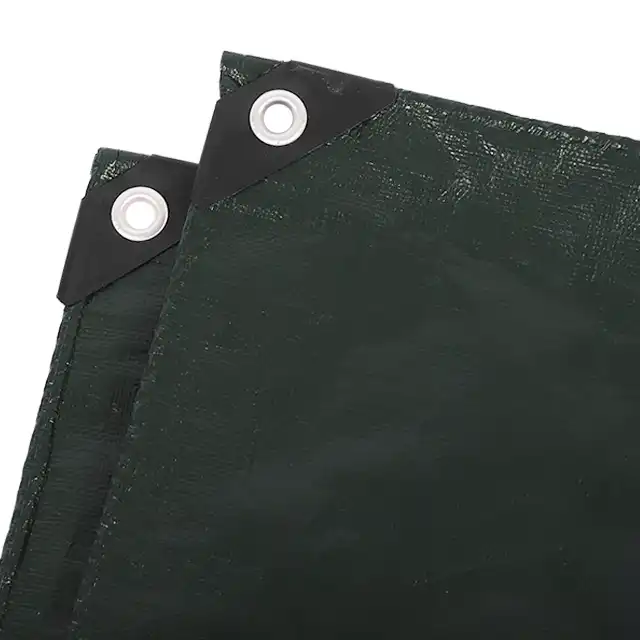
Modern tarpaulins are primarily manufactured from polyethylene (PE) materials, featuring high-density polyethylene fibers woven into durable fabric and laminated on both sides for enhanced protection. The material composition directly impacts storage requirements and longevity expectations. High-quality PE tarpaulins typically incorporate UV protection treatments ranging from 1% to 7%, providing resistance against harmful sunrays that cause fading and material degradation during storage periods. The construction of professional-grade tarpaulins involves multiple layers, including HDPE woven fabric with LDPE coating, creating a robust barrier against moisture, wind, and temperature fluctuations. However, this complex structure requires specific storage conditions to maintain its integrity. Heavy-duty poly tarps feature tightly woven polyethylene fibers that can withstand weights ranging from 65gsm to 280gsm, but improper storage can compromise these strength characteristics by creating stress points and premature wear patterns. Understanding your tarpaulin's material specifications is essential for determining appropriate storage methods. Different thickness levels, ranging from 7 to 12 mil, require varying approaches to folding and positioning during long-term storage. The mesh count, typically ranging from 10x10 to 14x14, influences how the material responds to compression and folding, making material-specific storage knowledge crucial for optimal preservation.
-
Climate Considerations for Different Tarpaulin Types
Environmental factors play a decisive role in tarpaulin storage effectiveness. PE tarpaulins with anti-freezing properties can withstand extreme temperature variations, but storage in consistently moderate conditions prevents unnecessary material stress. Arctic flexibility features in premium tarpaulins enable performance in harsh conditions, yet optimal storage occurs in controlled environments that minimize thermal expansion and contraction cycles. Humidity control represents another critical factor in tarpaulin storage success. Waterproof tarpaulins paradoxically require dry storage conditions to prevent mold, mildew, and coating deterioration. Even tear-resistant materials can develop weaknesses when stored in consistently damp environments, as moisture can penetrate seams and stress points, leading to gradual degradation that compromises the tarpaulin's protective capabilities.
Essential Pre-Storage Preparation for Tarpaulins
Proper preparation before storage significantly impacts tarpaulin longevity and performance reliability. The cleaning process should begin immediately after use, removing dirt, debris, chemicals, and organic matter that can cause staining, odors, or material breakdown during storage periods. Use mild soap solutions with lukewarm water, avoiding harsh chemicals that might compromise the tarpaulin's protective coating or UV treatment effectiveness. Complete drying is absolutely critical before any storage procedure. Even minimal moisture trapped within folds or seams can lead to mold growth, mildew development, and material degradation over time. Allow tarpaulins to air dry thoroughly in well-ventilated areas, ensuring both sides receive adequate air circulation. Pay special attention to reinforced areas, grommets, and seams where moisture tends to accumulate and remain longer than on smooth surfaces. Inspection during the preparation phase allows identification of existing damage that might worsen during storage. Check for small tears, worn areas, damaged grommets, or coating imperfections that could expand under storage conditions. Document any issues and consider repairs before storage to prevent minor problems from becoming major failures. Quality tarpaulins with proper maintenance can provide years of reliable service, but neglecting pre-storage inspection often leads to unexpected failures when the tarpaulin is next needed.
-
Repair and Maintenance Before Storage
Addressing minor damages before storage prevents significant deterioration during inactive periods. Small tears in PE material can be effectively repaired using appropriate patching materials and adhesives designed for polyethylene applications. Reinforcement of stress points, particularly around grommets and corners, extends overall tarpaulin life and maintains structural integrity during storage and subsequent use. Professional-grade tarpaulins often feature reinforced edges and corner construction, but these areas still require regular inspection and maintenance. Clean grommets thoroughly, ensuring no debris or corrosion that might cause tearing when the tarpaulin is deployed after storage. Replace damaged grommets promptly, as compromised attachment points can lead to catastrophic failure during use, potentially causing equipment damage or safety hazards that far exceed the cost of preventive maintenance.
Optimal Folding Techniques for Long-Term Storage
Proper folding technique directly influences tarpaulin condition after storage periods. The goal is minimizing permanent creases while creating compact, manageable storage configurations that prevent damage from compression or environmental factors. Begin by laying the tarpaulin on a clean, flat surface, ensuring no sharp objects or debris that could cause punctures or cuts during the folding process. For rectangular tarpaulins, start by folding the longer dimension in half, bringing edges together carefully to avoid trapping air that could create pressure points. Continue folding systematically, alternating direction with each fold to distribute stress evenly across the material. Avoid creating sharp creases by gently rounding fold lines and ensuring the material lies naturally without forced compression that could weaken fibers or coating. The accordion-style folding method works particularly well for larger tarpaulins, creating manageable sections while minimizing deep creases that can become permanent stress points. This technique involves creating parallel folds of consistent width, similar to folding a road map, which allows easy unfolding without creating excessive wear patterns. For tarpaulins exceeding 4 meters in width, consider the accordion method with fold widths no smaller than 50 centimeters to prevent excessive compression.
-
Rolling vs. Folding: Choosing the Right Method
Rolling represents an alternative storage method that eliminates fold lines entirely, making it ideal for tarpaulin storage when space permits. This technique works particularly well for thinner materials and smaller tarpaulins, as it prevents permanent creases while maintaining material flexibility. Begin rolling from one edge, maintaining consistent tension to create a tight, uniform roll that won't shift or loosen during storage. However, rolling requires more storage space and may not be practical for large tarpaulins or limited storage areas. Additionally, rolling can create its own stress patterns, particularly in the center of thick materials where compression is greatest. Consider the tarpaulin's intended use frequency when choosing between folding and rolling – frequently used tarpaulins benefit from rolling, while long-term storage often necessitates compact folding for space efficiency.
Creating Ideal Storage Environments
The storage environment significantly impacts tarpaulin longevity and performance retention. Ideal conditions include consistent temperatures between 50-70°F (10-21°C), relative humidity below 50%, and protection from direct sunlight that can cause UV degradation even through windows. Avoid storage areas subject to extreme temperature fluctuations, such as unheated garages or attics, which can cause material expansion and contraction leading to premature aging. Ventilation plays a crucial role in maintaining proper storage conditions. Stagnant air environments promote moisture accumulation and mold growth, even when tarpaulins are properly dried before storage. Ensure storage areas have adequate air circulation without creating drafts that might introduce dust, debris, or moisture. Consider using moisture-absorbing products in enclosed storage containers to maintain optimal humidity levels throughout storage periods. Location selection within storage areas deserves careful consideration. Keep tarpaulins elevated off concrete floors that can transfer moisture and maintain consistent cool temperatures. Avoid storage near heat sources, chemicals, or sharp objects that could cause damage during handling or environmental changes. Dedicate specific storage areas for tarpaulins to prevent accidental damage from other stored items and ensure easy access for inspection and rotation.
-
Container and Shelf Storage Solutions
Appropriate storage containers protect tarpaulins from environmental factors while maintaining organization and accessibility. Breathable storage bags or containers prevent moisture accumulation while protecting from dust and pests. Avoid plastic bags or airtight containers that can trap moisture and promote mold growth, even in properly dried tarpaulins. Instead, choose containers made from breathable materials that allow air circulation while providing protection. Shelf storage systems work exceptionally well for multiple tarpaulins, allowing easy identification and access while maintaining proper support. Design shelving to accommodate tarpaulin dimensions without overhang that could create stress points or creasing. Label storage locations clearly to prevent unnecessary handling during selection, reducing wear from repeated folding and unfolding during inventory management.
Advanced Storage Strategies for Different Applications
Professional applications require specialized storage approaches that address specific use patterns and performance requirements. Construction and industrial tarpaulins experience heavier use and may require different storage considerations than recreational or occasional-use products. Implement rotation systems that ensure even wear across multiple tarpaulins, preventing overuse of preferred units while others remain unused. Seasonal storage considerations become important for applications with predictable use patterns. Aquaculture tarpaulins used primarily during specific growing seasons benefit from thorough cleaning and specialized storage that prevents biological contamination. Agricultural applications may require storage methods that prevent pest intrusion while maintaining material integrity for critical growing season deployment. For high-frequency applications, consider partial unfolding rotation during extended storage periods. This technique prevents permanent set creases while maintaining readiness for immediate deployment. Document storage dates and implement first-in-first-out rotation systems that ensure consistent use patterns and prevent any single tarpaulin from remaining in storage for excessive periods that might compromise performance reliability.
-
Commercial and Industrial Storage Systems
Large-scale operations benefit from systematic storage approaches that track individual tarpaulin condition, usage history, and maintenance requirements. Implement identification systems that allow quick assessment of tarpaulin suitability for specific applications while maintaining detailed records of performance and storage conditions. This data-driven approach enables predictive maintenance and replacement scheduling that prevents unexpected failures during critical operations. Consider climate-controlled storage for valuable or critical-use tarpaulins where environmental conditions can be precisely maintained. While this represents a significant investment, the extended service life and reliability improvements often justify the expense for high-value applications. Commercial storage systems should include redundancy planning that ensures backup tarpaulins are properly maintained and ready for immediate deployment when primary units require maintenance or replacement.
Monitoring and Maintenance During Storage
Regular inspection during storage periods prevents minor issues from developing into major problems that could compromise tarpaulin performance when needed. Establish monthly inspection schedules that include visual examination for signs of pest intrusion, moisture accumulation, or environmental damage. Document findings consistently to track trends that might indicate storage condition problems requiring attention. Handle stored tarpaulins carefully during inspections, avoiding unnecessary unfolding that could cause wear or damage. Focus inspections on accessible areas while looking for indicators of deeper problems such as odors suggesting mold growth or color changes indicating UV exposure or chemical contamination. Address any identified issues immediately to prevent progression that could compromise the entire tarpaulin. Rotation schedules help ensure even wear and prevent long-term storage problems. Even when tarpaulins aren't actively used, periodic refolding in different positions prevents permanent creasing and allows inspection of previously folded areas. This practice also maintains familiarity with individual tarpaulin condition and characteristics, enabling better application matching when deployment becomes necessary.
Conclusion
Proper tarpaulin storage significantly extends service life while ensuring reliable performance when protection is needed most. By implementing systematic cleaning, appropriate folding techniques, optimal environmental conditions, and regular monitoring, users can maximize their tarpaulin investment while preventing costly equipment damage from protection failures.
Cooperate with Linyi Shengde Plastic Co., Ltd.
As a leading China tarpaulin factory and established China tarpaulin supplier since 2003, Linyi Shengde Plastic Co., Ltd. combines over 20 years of expertise with advanced manufacturing capabilities to deliver High Quality tarpaulin solutions. Our China tarpaulin manufacturer status is reinforced by ISO 9001:2015 certification and partnerships with UNHCR, IOM, ICRC, and UNICEF, demonstrating our commitment to exceptional quality standards.
Our comprehensive China tarpaulin wholesale operations feature 400+ Korea-imported automatic water-jet looms, 4 large fabric coating machines, and 1000+ skilled workers ensuring 100+ tons daily output capacity. Whether you need tarpaulin for sale in standard configurations or custom specifications, our R&D capabilities enable 4-meter width products with fire prevention and enhanced waterproof functions. With competitive tarpaulin price structures and global export experience spanning 30+ countries, we deliver reliable quality, fair pricing, and prompt delivery.
Ready to secure premium tarpaulin solutions for your applications? Contact our expert team at info@shengdetarp.com for detailed specifications and competitive quotes tailored to your specific requirements.
FAQ
Q: How often should stored tarpaulins be inspected?
A: Monthly inspections are recommended to check for moisture, pest damage, or material deterioration during storage periods.
Q: What's the maximum recommended storage duration for PE tarpaulins?
A: With proper storage conditions, quality PE tarpaulins can be safely stored for 2-3 years without performance degradation.
Q: Should tarpaulins be refolded in different positions during long-term storage?
A: Yes, refold every 6 months in different positions to prevent permanent creasing and stress point development.
Q: What humidity level is optimal for tarpaulin storage?
A: Maintain relative humidity below 50% with good ventilation to prevent mold growth and material degradation.
References
1. "Polymer Degradation and Performance in Protective Textiles" - Johnson, M.R., Materials Science Quarterly
2. "Storage Conditions for Synthetic Fabric Preservation" - Chen, L.K., Textile Engineering Review
3. "Environmental Factors in Polyethylene Material Longevity" - Rodriguez, A.B., Industrial Materials Journal
4. "Best Practices in Commercial Tarpaulin Management" - Thompson, D.W., Professional Equipment Maintenance Guide
